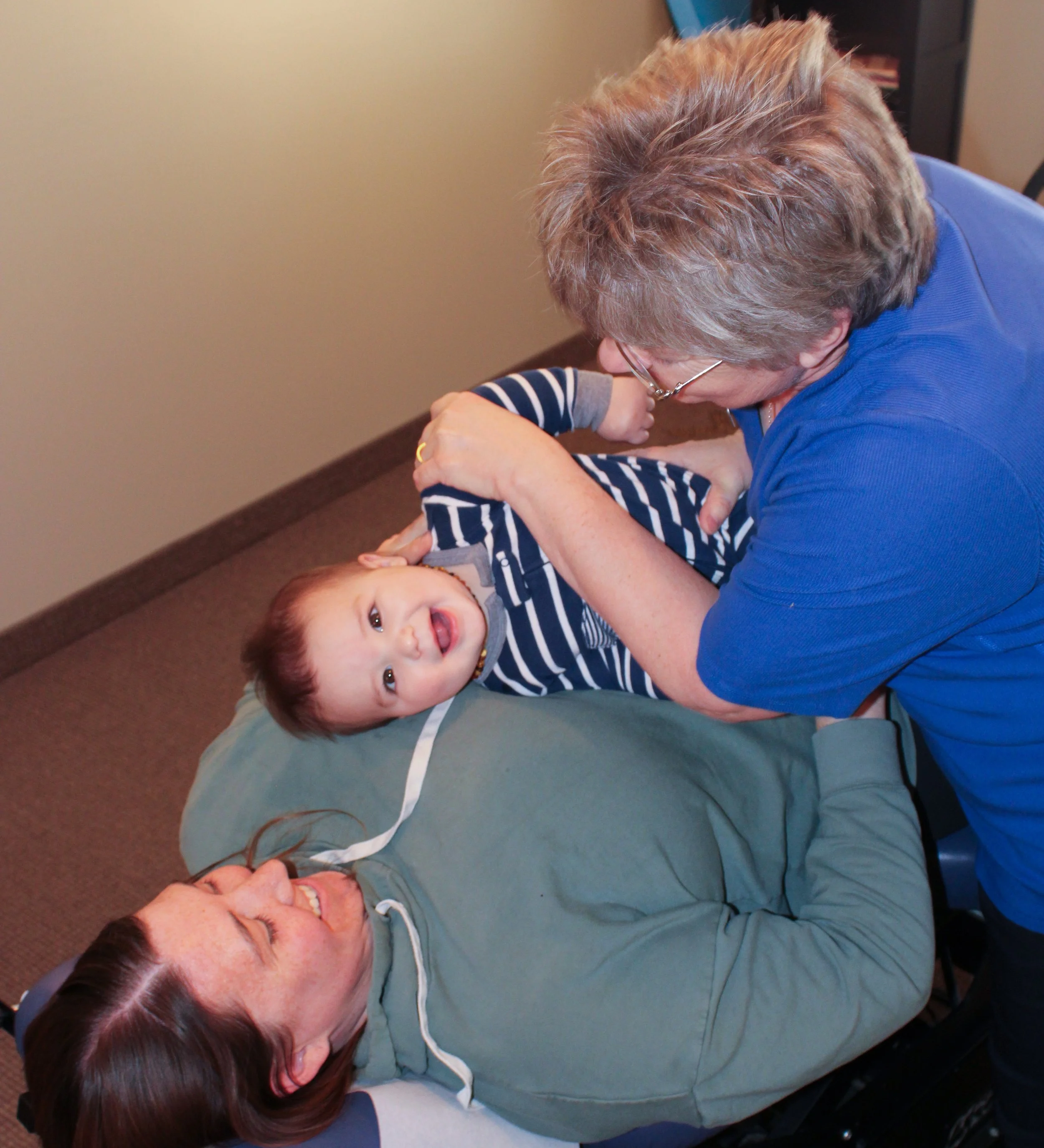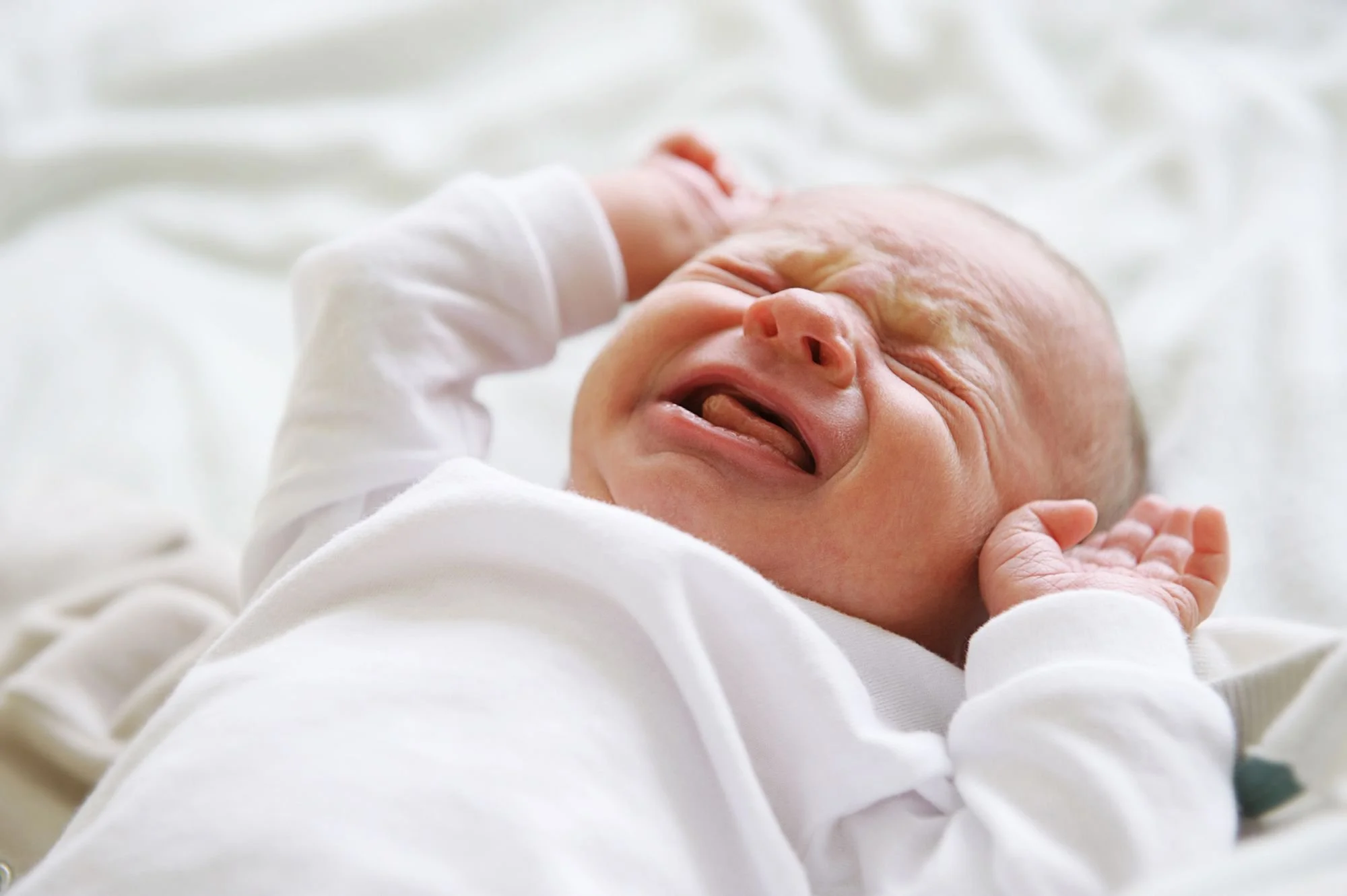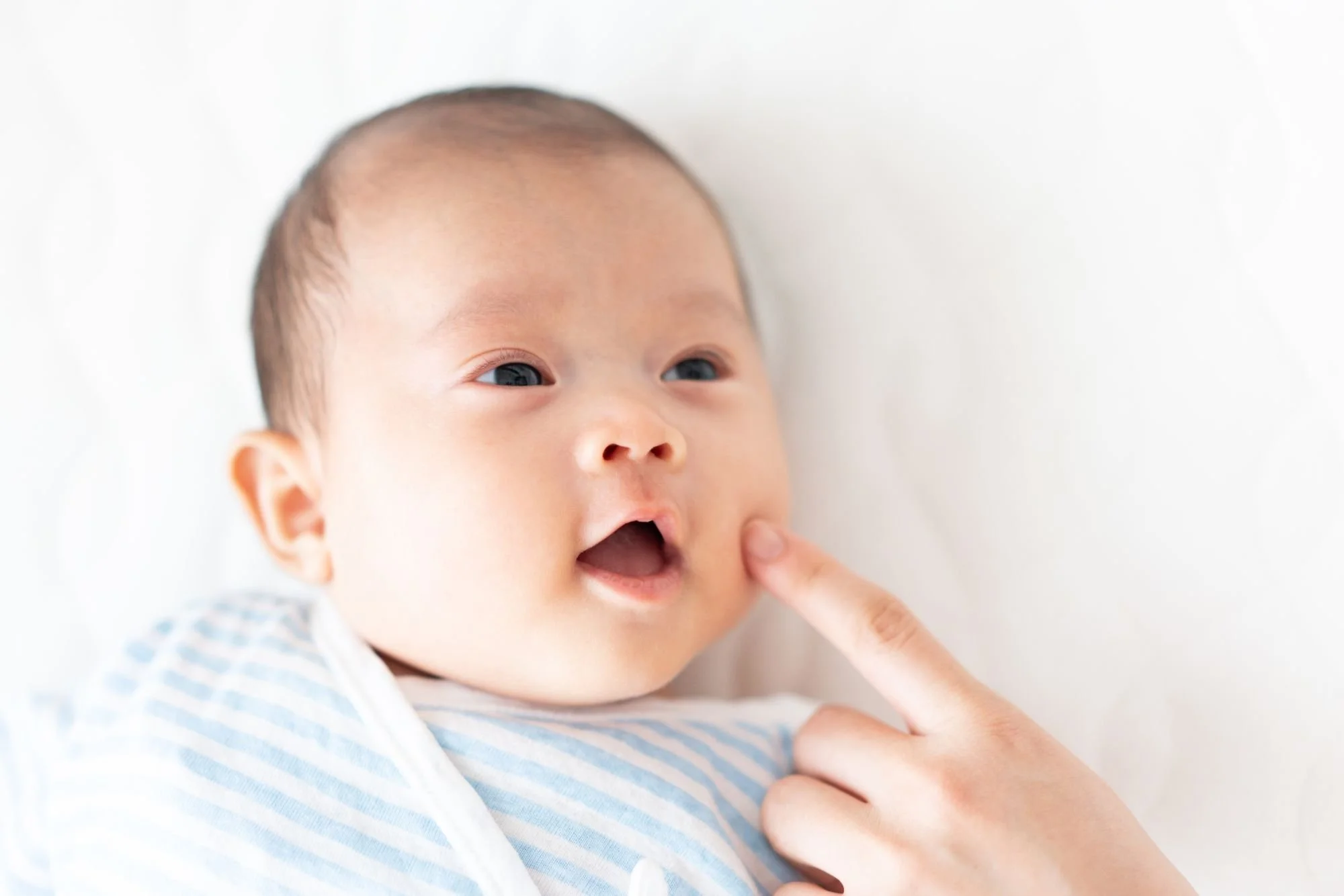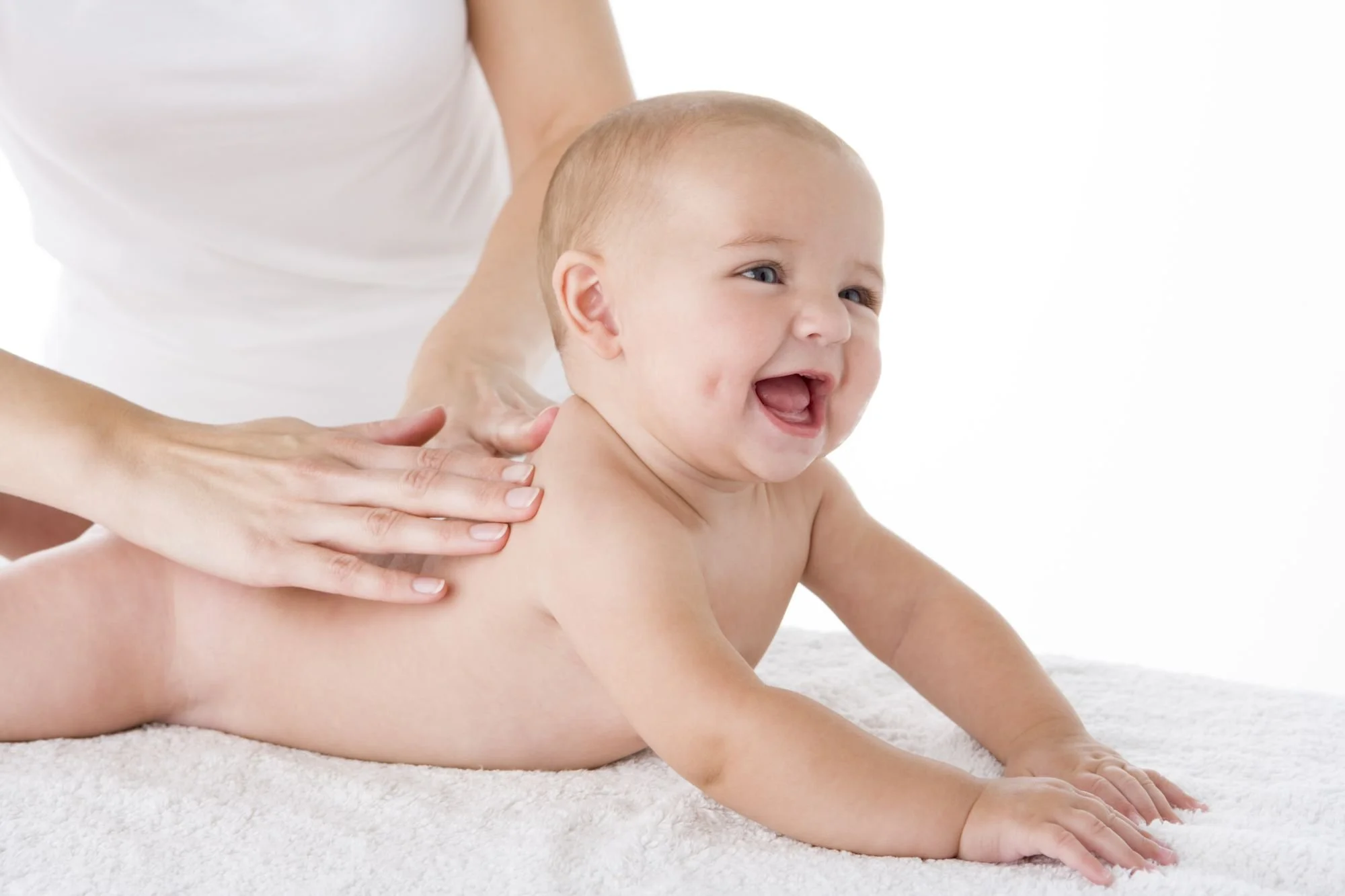
Touch, Movement and
Integrating Primitive Reflexes are
CRUCIAL for a child’s development
How this Program Started
As a pregnancy and pediatric focused chiropractor, over the past 25+ years I have taken countless seminars on pregnancy and pediatric adjusting. The course that made the biggest difference for me was The Connection between Brain, Behaviour and Body by Dr. Jenna Davis, DC.
The focus of the course was on primitive reflexes, how they develop and what can happen if they don’t integrate properly.
Kids who have retained primitive reflexes can have difficulties with learning and behaviour, and we can help using specific movements in a fun and effective way.
After lots of research, I’ve created a course that combines
Infant massage and the importance of touch
Specific movements that are important for brain development
This program is easy and fun to learn. It provides parents and caregivers with simple and effective ways to massage and move their babies to stimulate and integrate their primitive reflexes.
I hope that you will help the families in your practice know about this program.
The Five Pillars of Healthy Brain Development
The Best Beginnings program is based on five essential pillars of early child development. Together, they form the foundation for healthy brain, body, and emotional growth.
Each pillar highlights an important way that a developing mind is stimulated.
Touch
This is the infant massage part of the program. Infant massage provides many benefits for Baby and the person who is giving the massage. It helps to:
improve bonding and attachment
enhances sleep quality
improves breathing
decreases gassiness and fussiness
improves digestion and easier bowel movements
improves weight gain
Movement
Proper movement is key for brain development. This section discusses:
how sensory input and movement go together
Proprioception
the Vestibular System
the importance of tummy time
specific movements that will help to stimulate primitive reflexes
provides a movement and play section with suggestions for parents
Primitive
Reflexes
Integrating primitive reflexes is essential for brain development. In this section, there is
a beginner’s and a more advanced explanation of primitive reflexes
what primitive reflexes are
how primitive reflexes integrate
what happens if they don’t
8 important primitive reflexes
specific behaviours and learning challenges that children and adults might experience if the primitive reflexes don’t integrate.
Rhythm
This section discusses:
rhythmic touch
rhythmic movement
rhythmic sounds
the importance of sound and how to use them to stimulate Baby’s language centres
how to use them to soothe babies to sleep
Sensory
Play
This section provides ideas for parents to help Baby to explore their world through their senses. It discusses:
the importance of sensory play
5 important senses: touch, taste, smell, vision and hearing
the importance of making a mess
messy play and free play
sensory exposure that can cause harm, such as loud background noise and the sad beige esthetic
Top 5 Learning and Behaviour Challenges for Each Retained Primitive Reflex
Startle Reflex
mood changes
acts impulsively
afraid to try new things
trouble making friends
is often anxious, worried or nervous
Tonic Labrynthine Reflex - TLR
poor core strength
trouble with balance
difficulties focusing
clumsy or uncoordinated
difficulties playing ball sports
Plantar Reflex
grips the floor with toes when standing
loose ankles that sprain easily
doesn’t know where is in space
falls often
sensitive feet - doesn’t like socks or shoes
Rooting Reflex
sensitivity around the mouth
picky eater
messy eater
ongoing thumb sucking
difficulties speaking
Asymmetrical Tonic Neck Reflex - ATNR
did not crawl as a baby
robot-like gait
clumsy
holds a pencil too tight
mixes b’s and d’s when writing
Palmar Grasp Reflex
messy handwriting
awkward pencil grip
right and left confusion
thumb sucking after 18 months
eats with hands instead of a fork or spoon
Symmetrical Tonic Neck Reflex - STNR
skipped crawling, or crawled commando-style
struggles with ball sports
slouches or leans when sitting, holds head up
difficulties focusing or paying attention
difficulty copying from the board
Spinal Galant Reflex
fidgety, unable to sit still
trouble with focus
difficulties with reading
bedwetting past the age of 5
ticklish, low back is very sensitive, will squirm when back touches a chair
The ultimate question is:
How many children who have
retained primitive reflexes could be misdiagnosed as having ADHD?
How to help your pediatric patients *
How to help your pediatric patients *
Please help your patients find Best Beginnings!
New parents are struggling to know how to hold, move and play with their babies. This program will give parents easy and fun things to do that will help Baby be more comfortable in their body and more engaged in their world.
















